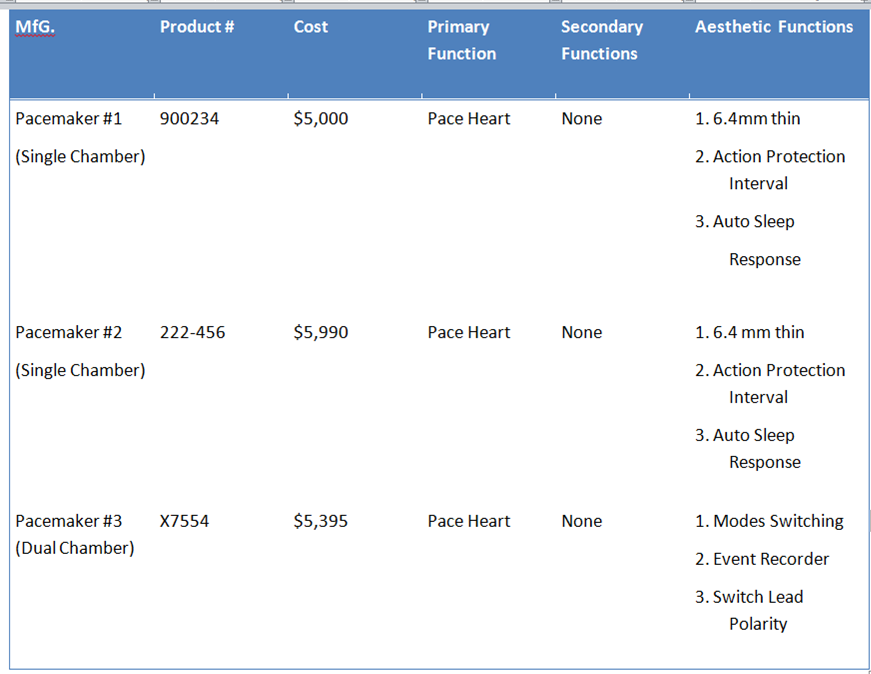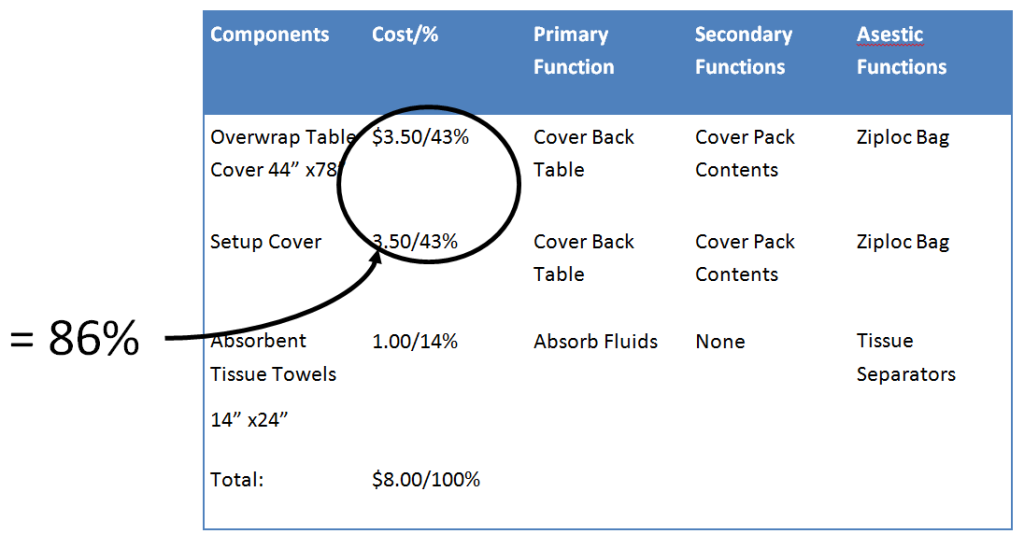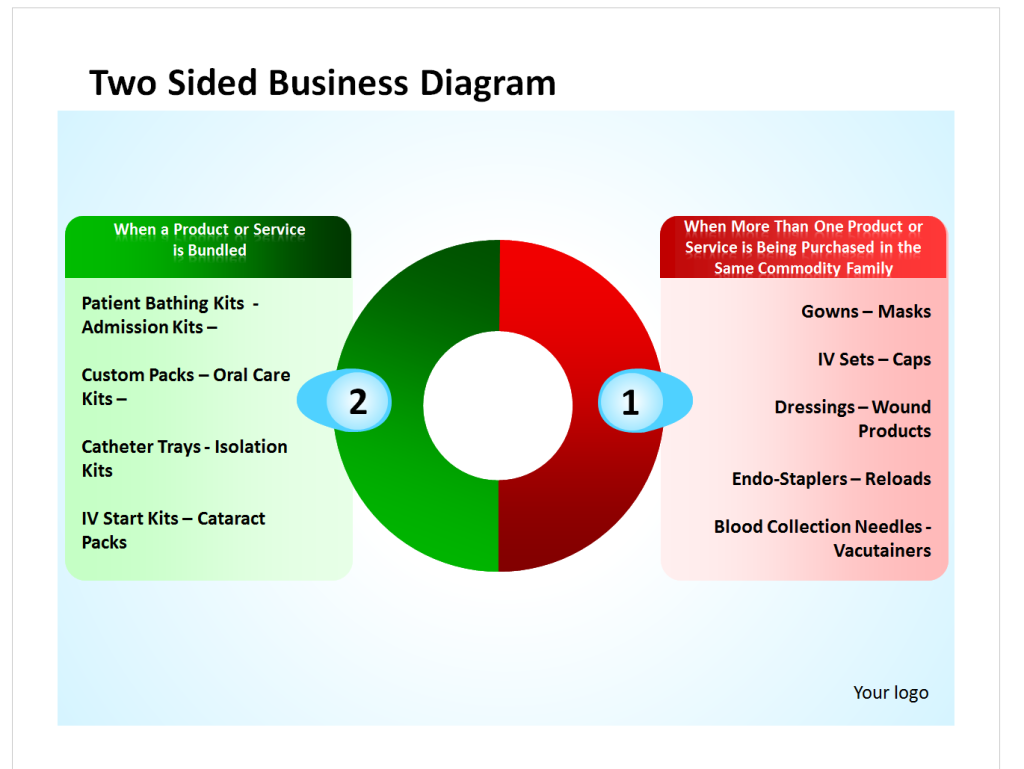You need to know what your customer is looking for in new products.
We might not realize it, but value analysis has a 70-year history and during that time value analysis practitioners worldwide have developed new tools to help their colleagues to improve the outcomes of their value analysis studies. One of the most powerful tools we have developed to improve our clients’ value analysis studies is a FUNCTIONAL MATRIX. A functional matrix helps healthcare organizations functionally analyze bundled products, compare functional alternatives, or evaluate new requests from their customers.
Functional Approach
Function is what a product, service, or technology does to make it useable. A vacuum cleaner’s primary function is to “collect dirt”, a pacemaker’s primary function is to “pace heart”, and so on and so forth. A secondary function is what a product, service, or technology does in addition to its primary function, and an aesthetic function (or feature) is nice, pleasant, and desirable, but not always functionally required to get the job done.
These are the basic constructs of functional analysis by which you can easily dissect bundled products, compare alternatives, or evaluate new purchases, as we have done in figure 1 on the next page with a pacemaker functional matrix by comparing competitive products that one of our clients is now buying. Note that pacemaker #1 and #2 are functional equivalents, meaning that they are exactly the same.
Figure 1: Pacemaker Functional Matrix
(Note: Data provided is hypothetical, and doesn’t reflect actual pacemaker pricing or specifications)
Best of all, our hypothetical hospital can save $990 on each pacemaker they implant if they standardize on pacemaker #1 vs. #2 since, as I said, they are functional equivalents. Do you see how easy it is with a functional matrix to determine if you are duplicating products in your formulary or if there are lower cost alternatives to what you are buying now?
Bundled Products
One of the most difficult areas to identify savings opportunities is with bundled packs and kits. However, it can be much easier to do so if you employ a functional matrix to analyze the components of your packs and kits, as we have done with an OB pack (figure 2) to determine savings opportunities. First, you will note that 86% of the pack’s cost are in just two items (overwrap table cover and setup table cover). This is where you should spend your time looking for lower cost alternatives for these two items. It doesn’t matter that there are other items in the pack. THIS IS WHERE YOUR SAVINGS RESIDE! Any additional time spent evaluating the other items in the pack would be disadvantageous.
Figure 2: Disposable OB Pack Functional Matrix
Two New Rules
To sum up this lesson on functional matrixes, we would like to recommend two new rules for you to follow when you are evaluating new or existing bundled products, services, or technologies, as shown in detail in figure 3 on the next page. You will note that the graphic lists the two new rules and also gives examples of products that fall into these categories of purchase to assist you in deciding when to employ a functional matrix.
This technique will enable you to evaluate and then search for lower cost alternatives on these products and others. The list is not all inclusive, but we feel it is a good starting point to give you a feel for how the rules will work at your own healthcare organization.
Figure 3: New Rules for Utilizing Functional Analysis
The goal with this lesson was to make your value analysis job easier with a new value analysis tool that we have used for over two decades to help our clients get better at functional analysis.
As you know, sometimes all it takes is one new tool to up your value analysis game. Trust us when we say that this one new tool can help you make a giant leap forward in your value analysis savings initiatives. Try it – you will be surprised by the outcome!








